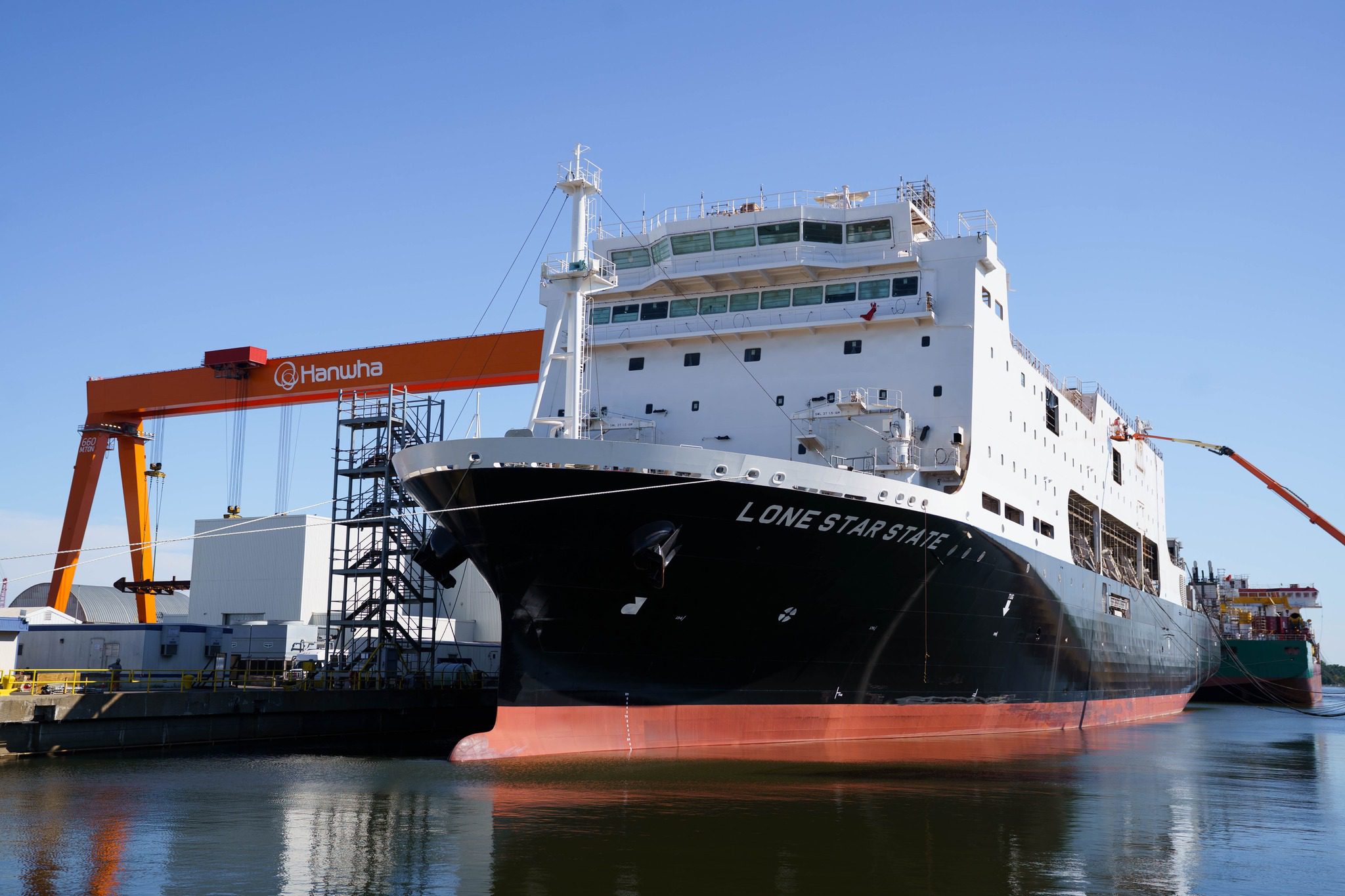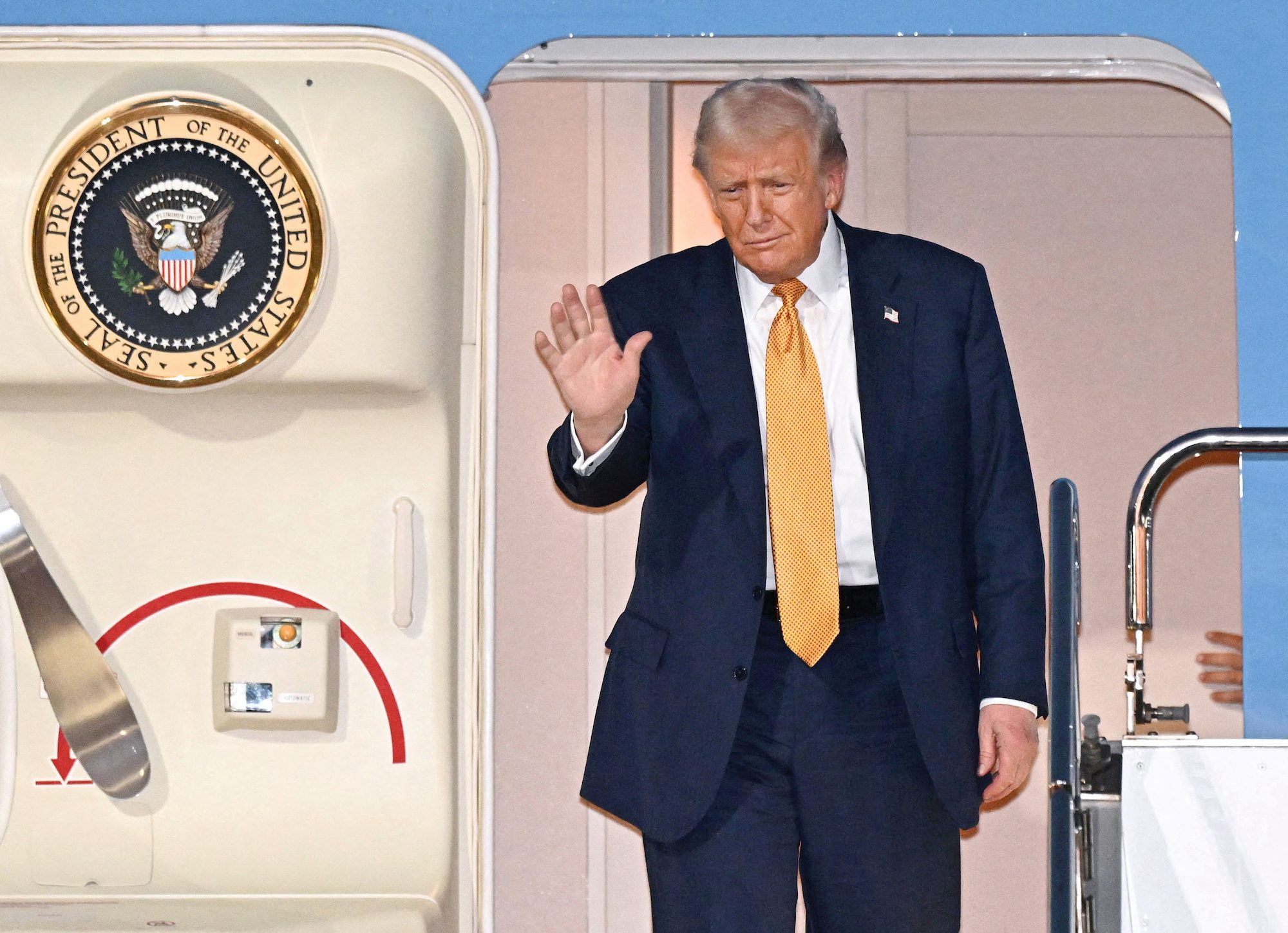Three industry experts told a Senate subcommittee on Tuesday that the United States faces an urgent need to rebuild its commercial shipbuilding capacity in the face of decades of Chinese industrial targeting and declining domestic maritime infrastructure.
The Senate Committee on Commerce, Science, and Transportation’s Subcommittee on Coast Guard, Maritime, and Fisheries convened the hearing titled “Sea Change: Reviving Commercial Shipbuilding” to examine how to modernize U.S. commercial shipbuilding while strengthening the broader maritime industrial base. The hearing focused on President Trump’s efforts within the National Security Council to “Make Shipbuilding Great Again” and issues likely to be addressed in the administration’s upcoming Maritime Action Plan, a key component of the President’s Restoring America’s Maritime Dominance executive order signed in April.
Chairman Dan Sullivan said the nation faces a critical strategic challenge as foreign competitors, especially China, lead global shipbuilding while domestic capacity remains limited. “This hearing will be an important step toward understanding the obstacles and identifying policy solutions to rebuild a robust, competitive U.S. shipbuilding industry—one that supports good-paying American jobs, strengthens our maritime workforce, and ensures our national security in key regions like the Arctic,” Sullivan said ahead of the hearing.
Following the hearing, Senators Mark Kelly (D-AZ) and Todd Young (R-IN), lead sponsors of the SHIPS for America Act, released a joint statement: “Today’s hearing made clear that there is growing, bipartisan momentum to rebuild American shipbuilding, which will be good for our economy and national security. This hearing is an important step in getting the SHIPS for America Act passed to revitalize our maritime and shipbuilding industries. We’ll keep working in Congress and with maritime leaders to pass our bill that will create good-paying jobs and counter China’s dominance over the oceans.”
The Jones Act’s Role
Matthew Paxton, President of the Shipbuilders Council of America, told the committee that the Jones Act sustains an American merchant marine and shipbuilding industrial base at no cost to federal taxpayers by reserving domestic waterborne commerce to U.S.-built, U.S.-flagged, U.S.-owned, and U.S.-crewed vessels.
“It is the bedrock that provides the stable, demand-based market required to sustain modern yards, preserve skilled craft labor, and ensure a robust supplier base capable of building and maintaining complex government and commercial fleets,” Paxton said in a written statement.
Paxton warned that weakening or waiving the Jones Act would erode this foundation, undercut investment and financing for U.S.-built fleets, and directly harm the industrial base the nation depends on for naval readiness.
He also addressed China’s role in the global maritime sector, stating that for nearly three decades China has executed a coordinated, non-market industrial strategy to seize market share, suppress prices, and consolidate upstream supply chains. Paxton noted that of the ten current Maritime Security Program operators, only three are U.S.-owned, with the remainder being subsidiaries of foreign parent companies.
Calls for “Merchant Marine Act of 2025”
Professor Salvatore Mercogliano of Campbell University, a former U.S. Merchant Marine deck officer and creator of the What’s Going On With Shipping Youtube channel, characterized the SHIPS Act as “the most significant maritime reform effort since the Merchant Marine Act of 1970.”
Re-introduced in April 2025 by Senators Kelly and Young, the SHIPS for America Act proposes establishing a Strategic Commercial Fleet Program to grow the U.S.-flag fleet to 250 ships and expanding cargo preference rules to require 100 percent of U.S. government cargo to move on U.S.-flagged vessels.
Mercogliano told the committee that the SHIPS Act—paired with recent Trump administration initiatives like Section 301 port fees and the Executive Order on Shipbuilding—represented the most significant U.S. maritime reform since 1970, effectively a “long overdue Merchant Marine Act of 2025.”
While he acknowledged the goal of building 250 ships in ten years is ambitious, he said “it is essential if we hope to rebuild our maritime capacity.”
Mercogliano highlighted reflagging foreign-built ships under the U.S. flag (examples: CMA CGM Phoenix, American Progress) as a key early step. To make this viable, he recommended several complementary actions, including expanding the Maritime Security Program and Tanker Security Program to offset higher U.S. operating costs, securing consistent cargo flows through cargo preference laws or incentives for private shippers, and offering tax rebates to companies that ship goods on U.S.-flagged vessels.
“A key step is facilitating the reflagging of vessels, as seen with the CMA CGM Phoenix and the LNG tanker American Progress, and promoting the benefits of American registry. This should include a careful re-examination of the Jones Act—not to repeal it, but to modernize its application,” he said.
Mercogliano also identified a near-term opportunity in modernizing the domestic fleet of tugboats, towboats, and ferries. He noted that insufficient tug capacity contributed to the MV Dali incident in Baltimore, and said a national program to replace and modernize these vessels could provide an immediate boost to domestic shipyards.
On innovation, Mercogliano urged investment in advanced maritime technologies such as small modular nuclear reactors for maritime propulsion, saying the United States has an opportunity to lead again in this area.
Key Provisions of the SHIPS for America Act
The legislation would coordinate U.S. maritime policy by establishing a Maritime Security Advisor within the White House to lead an interagency Maritime Security Board for implementing a National Maritime Strategy.
The bill would establish a Maritime Security Trust Fund to reinvest maritime industry duties and fees into security programs and infrastructure.
To enhance U.S.-flagged vessel competitiveness, the SHIPS Act would streamline regulations, modify duties, require government-funded cargo on U.S.-flagged vessels, and mandate that some commercial goods from China use U.S.-flagged vessels starting in 2030.
The legislation would expand the shipyard industrial base through a 25 percent investment tax credit, converting the Title XI Federal Ship Financing Program into a revolving fund, and establishing a Shipbuilding Financial Incentives program.
It would accelerate U.S. leadership in next-generation ship design and energy systems by establishing the U.S. Center for Maritime Innovation and creating Maritime Prosperity Zones to unlock private capital for industrial investment.
The bill invests in the maritime workforce by allowing mariners to retain credentials, funding infrastructure for the U.S. Merchant Marine Academy and State Maritime Academies, supporting workforce training centers, and modernizing the Coast Guard’s Merchant Mariner Credentialing system.
Administration Maritime Action Plan Due November 5
Paxton noted that the Trump Administration’s Executive Order on Maritime Dominance directed development of a Maritime Action Plan to be delivered on November 5. That plan aims to align trade tools with industrial strategy, strengthen domestic shipbuilding and repair capacity, and consider a dedicated funding mechanism such as a maritime security trust fund.
Mercogliano urged passage of the SHIPS Act to establish a Maritime Security Advisor and a Maritime Trust Fund for financing, along with expanding the Investment Tax Credit, Title XI loan guarantees, and Shipbuilding Finance Incentives to redirect American capital from foreign shipbuilding toward domestic production.
“Reviving the U.S. maritime industry is not merely an economic or industrial challenge—it is a matter of national security and global competitiveness,” Mercogliano concluded.
Vessel Construction Manager Model
The hearing also featured testimony from Jeff Vogel, Vice President of Legal at TOTE Services. Vogel testified that the U.S. commercial shipbuilding industry has been severely weakened by decades of foreign competition and subsidies, with American yards now producing less than 1% of the world’s vessels compared to China’s 55%. However, he argued that the industry can be revitalized through innovative contracting methods like the Vessel Construction Manager (VCM) model, which has delivered government vessels, namely the National Security Multi-Mission Vessels (NSMVs), at approximately $314 million per ship—saving taxpayers nearly $4.5 billion compared to traditional Navy estimates of $750 million to $1.2 billion.
Vogel called for expanded use of the VCM approach, steady government demand signals through appropriated shipbuilding programs, and support for the SHIPS Act, stating: “By using commercial solutions, many of the inefficiencies that have plagued the U.S. shipbuilding industry can be quickly resolved, restoring American shipbuilding dominance.”
He also emphasized TOTE’s innovation leadership, noting that “where U.S. innovation leads the world follows, with LNG-fueled container ships now making up over 56% of the entire global orderbook.”
Conclusion
With the Administration’s Maritime Action Plan due shortly, the hearing underscored growing bipartisan recognition that rebuilding U.S. shipbuilding capacity is both an economic opportunity and a national security imperative. The witnesses’ testimony made clear that while the challenge is substantial—China now controls over half of global shipbuilding while American yards produce less than 1%—a path forward exists through legislative action like the SHIPS Act, preservation of the Jones Act, innovative contracting approaches like the VCM model, and sustained government commitment.
As all three witnesses emphasized, reviving American maritime dominance will require not just policy reforms but a fundamental shift in how the nation views its relationship to the seas—transforming the United States from what one witness called “a purely naval power” into a true maritime power with a robust commercial sector capable of supporting both economic prosperity and national defense.
You can watch the full hearing here.

 Join The Club
Join The Club











